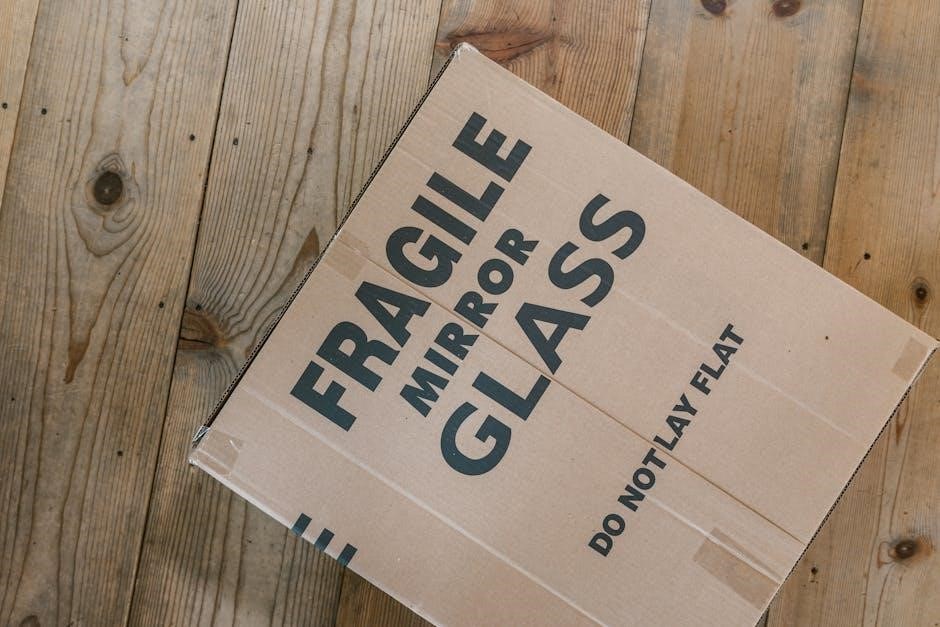J-B Weld is a high-strength epoxy adhesive widely used for bonding various materials like metal‚ wood‚ and plastic. Known for its durability and steel-like strength‚ it offers a versatile solution for repairs and projects‚ making it a trusted choice for professionals and DIYers alike. This guide provides detailed instructions on using J-B Weld effectively.
Overview of J-B Weld Products
J-B Weld offers a range of high-performance epoxy-based products designed for various repair and bonding needs. The Original Cold Steel Weld is the flagship product‚ known for its steel-like strength and versatility on metal‚ plastic‚ and wood. J-B Weld KwikWood is a specialized wood repair putty that hardens quickly‚ ideal for woodworking projects. Additionally‚ J-B Weld WoodWeld is another wood-focused product designed for strong‚ durable bonds. Each product is formulated to cater to specific materials and applications‚ ensuring users can choose the right solution for their projects. This variety makes J-B Weld a go-to brand for professionals and DIY enthusiasts seeking reliable‚ long-lasting repairs.
Importance of Following Instructions
Adhering to J-B Weld instructions is crucial for achieving optimal results. Proper preparation‚ mixing‚ and application ensure strong‚ durable bonds. Skipping steps or ignoring ratios can lead to weak joints. Following curing times prevents premature use‚ while surface preparation avoids contamination. Instructions guide material compatibility‚ ensuring the right product is used for each task. Deviations may result in repairs failing under stress. By following guidelines‚ users maximize product performance and longevity. This attention to detail ensures professional-grade outcomes‚ making it essential to adhere strictly to provided instructions for best results and safety.

Preparation Before Using J-B Weld
Proper preparation is key to successful J-B Weld application. Clean and dry surfaces ensure strong adhesion. Remove dirt‚ oil‚ or grease for optimal bonding results.
Surface Preparation Techniques
Surface preparation is crucial for effective J-B Weld application. Begin by cleaning the area with acetone or a similar solvent to remove grease‚ oil‚ or dirt. Next‚ lightly sand the surface using medium-grit sandpaper to create a rough texture‚ enhancing adhesion. Ensure the area is completely dry before applying J-B Weld‚ as moisture can hinder bonding. Proper preparation ensures a strong‚ durable repair‚ preventing potential failures.
Cleaning the Surface
Cleaning the surface is essential for proper J-B Weld adhesion. Start by removing dirt‚ grease‚ or oil using acetone or denatured alcohol. Apply the cleaner with a clean‚ lint-free cloth‚ ensuring thorough coverage. Avoid using harsh chemicals or abrasive materials that could damage the surface. Once cleaned‚ inspect the area to ensure no residue remains. Proper cleaning ensures a strong bond between the J-B Weld and the material. For best results‚ clean the surface just before applying the product to prevent contamination. This step is critical for achieving a durable and long-lasting repair. Always follow safety guidelines when handling cleaning agents.
Drying the Surface
Drying the surface is a critical step after cleaning to ensure J-B Weld adheres properly. Use a clean‚ dry cloth or let the surface air dry. Avoid touching the area to prevent oil from your skin interfering with the bond. For faster drying‚ use a heat source like a hairdryer on a low setting‚ but avoid extreme heat that could warp or damage the material. Ensure the surface is completely dry before applying J-B Weld‚ as moisture can weaken the bond. Allow at least 15–30 minutes for drying‚ depending on the material and environmental conditions. Proper drying ensures maximum adhesion and strength of the repair. Always prioritize a dry surface for optimal results.
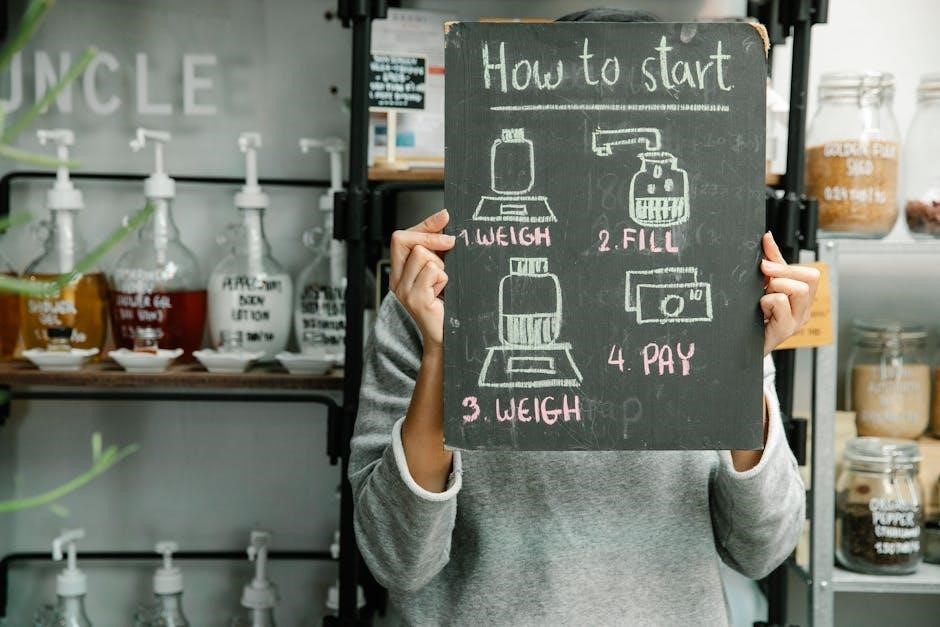
Step-by-Step Guide to Using J-B Weld
A comprehensive guide detailing the process of using J-B Weld‚ from surface preparation to application and curing‚ ensuring a strong and lasting bond. Follow instructions precisely.
Step 1: Cutting and Mixing
Begin by cutting the J-B Weld components (resin and hardener) with a utility knife or scissors. Cut equal parts of both materials‚ ensuring a 1:1 ratio. Mix thoroughly on a disposable surface using a mixing stick or similar tool. It’s crucial to achieve a uniform color to avoid marbling. Work quickly‚ as the mixture will begin setting in about 20–25 minutes. Proper mixing ensures a strong bond. Avoid over-mixing‚ as this can introduce air bubbles. If using a specific J-B Weld product like KwikWood or Original Cold Steel‚ follow the same mixing ratio but note any variations in curing times. Always wear gloves to prevent skin contact and work in a well-ventilated area.
Step 2: Application
Once mixed‚ apply the J-B Weld paste immediately to the prepared surface. Use a putty knife‚ brush‚ or applicator to spread it evenly‚ ensuring full coverage of the repair area. Work in thin layers to avoid air bubbles. Press firmly to fill gaps and ensure adhesion. Smooth the edges to blend with the surrounding material. For best results‚ apply within 20–25 minutes of mixing‚ as the compound will start to set. If bonding uneven surfaces‚ press firmly to ensure contact. Clean tools with solvent before the compound hardens. Avoid overworking the material once applied‚ as this can weaken the bond. Always wear gloves to prevent skin contact and work in a well-ventilated area to avoid inhaling fumes.
Step 3: Curing Process
After application‚ allow J-B Weld to cure undisturbed in a cool‚ dry environment. The initial set takes 4–6 hours‚ but full curing requires 24 hours to achieve maximum strength. Avoid exposing the repair to water or stress during this time. For optimal results‚ cure at room temperature (70–80°F). Higher temperatures can speed up curing‚ while cooler temps slow it down. Once cured‚ the bond is waterproof and heat-resistant up to 550°F. Ensure the area remains still and undisturbed to prevent weakening the bond; Full curing strength is achieved after 24 hours‚ making the repair ready for use. Always follow the recommended curing time for a durable and lasting fix.
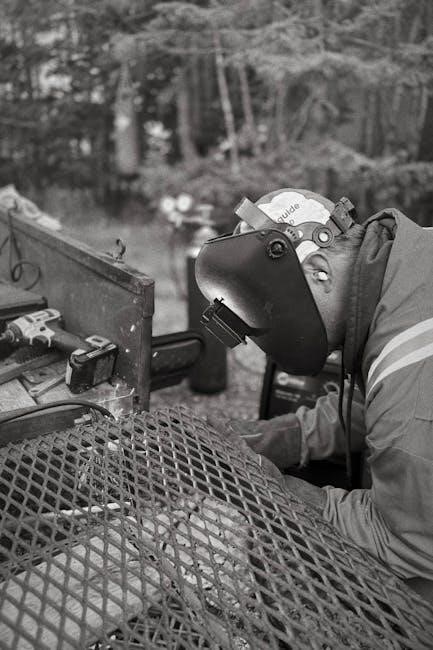
Different Types of J-B Weld Products
J-B Weld offers various products tailored for specific materials and needs. Options include Original Cold Steel for metal‚ KwikWood for quick wood repairs‚ and WoodWeld for durable wood bonds.
J-B Weld Original Cold Steel
J-B Weld Original Cold Steel is a robust epoxy-based compound designed for bonding metal surfaces. It creates a permanent‚ high-temperature-resistant seal‚ making it ideal for automotive repairs‚ machinery‚ and industrial applications. Once cured‚ it achieves a tensile strength of over 900 PSI‚ ensuring durability. This product is particularly effective for repairing cracked engine blocks‚ exhaust systems‚ and other metal components exposed to extreme conditions. The formula adheres well to clean‚ dry metal surfaces and cures at room temperature within 4-6 hours‚ with full strength achieved in 16-24 hours. Proper surface preparation and mixing are essential for optimal results. It is widely recognized for its reliability in demanding environments. Always follow instructions carefully for best outcomes.
J-B Weld KwikWood
J-B Weld KwikWood is a fast-setting‚ wood-repair epoxy designed for quick fixes on wood surfaces. It dries to a wood-like texture‚ making it ideal for furniture‚ flooring‚ and other woodworking projects. The formula sets in just 5-10 minutes‚ with a total cure time of 1 hour‚ allowing for rapid repairs. KwikWood bonds strongly to wood‚ creating a durable and long-lasting seal. It is perfect for filling gaps‚ cracks‚ and holes in wood. The product is easy to sand and paint‚ blending seamlessly with the surrounding material. Its quick action makes it a favorite for time-sensitive projects. Proper surface preparation is still essential for optimal adhesion. Follow instructions carefully to achieve the best results with this versatile wood repair solution.
J-B Weld WoodWeld
J-B Weld WoodWeld is a two-part epoxy adhesive specifically formulated for bonding and repairing wood surfaces. It creates a strong‚ durable bond that withstands wear and tear‚ making it ideal for furniture restoration‚ flooring‚ and other woodworking projects. WoodWeld dries to a natural wood color and can be sanded and painted for a seamless finish. The product sets in about 20-30 minutes and fully cures in 1 hour‚ offering a quick yet reliable solution for wood repairs. It is resistant to moisture and heat‚ ensuring long-lasting results. Proper surface preparation‚ such as cleaning and drying‚ is essential for optimal adhesion. WoodWeld is a versatile and effective choice for any wood-related repair or DIY project.
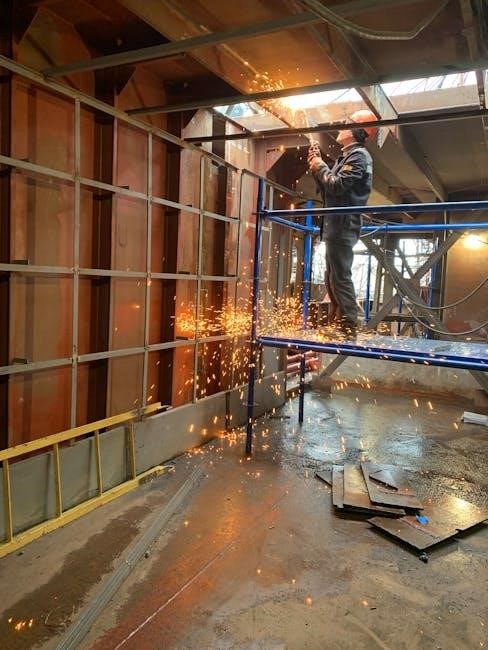
Application on Various Materials
J-B Weld is suitable for metal‚ wood‚ plastic‚ and concrete‚ offering extreme bonding strength and durability across all surfaces‚ making it a reliable choice for diverse repairs.
Using J-B Weld on Metal
J-B Weld is highly effective for bonding metal surfaces‚ offering superior strength and durability. For best results‚ ensure the metal is clean and free of grease‚ oil‚ or rust. Lightly sand the area to create a rough surface for better adhesion. Mix the J-B Weld components thoroughly and apply to the prepared metal. Use a putty knife or brush to spread evenly. Allow the product to cure at room temperature for 4-6 hours to set and 24 hours to reach full strength. Once cured‚ it creates a permanent‚ heat-resistant bond that can withstand heavy loads and harsh conditions‚ making it ideal for automotive‚ machinery‚ and industrial repairs.
Using J-B Weld on Wood
J-B Weld can be successfully used on wood for durable repairs‚ though it requires proper preparation. Ensure the wood surface is clean‚ dry‚ and free of splinters or debris. Lightly sand the area to improve adhesion. For rotten or porous wood‚ fill holes or gaps first. Mix J-B Weld according to instructions and apply a thin‚ even layer. Clamp or hold the repair in place to avoid movement. Allow 4-6 hours for the epoxy to set and 24 hours to reach full strength. Once cured‚ it forms a strong‚ long-lasting bond. For best results‚ work in a well-ventilated area and avoid exposing the repair to water until fully cured. This makes it ideal for furniture‚ flooring‚ and other wooden structures.
Using J-B Weld on Plastic
J-B Weld is an excellent choice for bonding plastics‚ particularly for materials like PVC‚ ABS‚ and polypropylene. For best results‚ ensure the plastic surface is clean and dry. Lightly sanding the area with fine-grit sandpaper can enhance adhesion. Apply a thin layer of J-B Weld to the prepared surface‚ making sure to mix the components thoroughly. Allow the epoxy to cure for at least 24 hours to achieve maximum strength; Note that some plastics may require a primer or additional preparation for optimal bonding. Always follow safety precautions‚ such as working in a well-ventilated area. This method is ideal for repairing cracks‚ filling gaps‚ or securing loose parts on plastic items like containers‚ pipes‚ or automotive components. Proper application ensures a strong‚ durable bond.
Using J-B Weld on Concrete
J-B Weld is a reliable solution for bonding and repairing concrete surfaces. Start by thoroughly cleaning the concrete to remove dirt‚ grease‚ or debris. Use a wire brush to roughen the surface for better adhesion. Apply a thin layer of J-B Weld‚ ensuring the mixed epoxy is spread evenly. For larger repairs‚ multiple thin layers may be needed‚ allowing each to cure slightly before adding the next. A primer can be applied first for enhanced bonding‚ though it’s not always necessary. Allow the epoxy to cure for at least 24 hours to achieve full strength. J-B Weld is ideal for repairing cracks‚ anchoring bolts‚ or bonding concrete to metal. Always work in a well-ventilated area and wear protective gloves for safety.

Aftercare and Curing Times
After applying J-B Weld‚ avoid exposure to water or stress for 24 hours. Full curing takes 24 hours‚ with initial set in 6–8 hours. Keep the area dry and undisturbed during this period for optimal results.
Waiting Time Before Touching
After applying J-B Weld‚ it’s crucial to allow the product to set undisturbed. The initial set time is typically 6–8 hours at room temperature‚ depending on environmental conditions. During this period‚ avoid touching or exposing the repaired area to water‚ heat‚ or stress. Full curing takes 24 hours‚ after which the bond reaches its maximum strength. For best results‚ wait at least 24 hours before exposing the repair to water‚ chemicals‚ or heavy use. Humidity and temperature can influence curing times; cooler or damp conditions may slow the process. Always adhere to the recommended waiting time to ensure a durable and long-lasting repair.
Optimal Bonding Strength
J-B Weld reaches its optimal bonding strength after 24 hours of curing at room temperature. This allows the epoxy to fully harden and achieve its maximum durability. Environmental factors like temperature and humidity can influence curing efficiency‚ so ideal conditions are 65–90°F (18–32°C) with low humidity. Once cured‚ J-B Weld creates a bond stronger than many metals‚ with a tensile strength of up to 3‚900 PSI. To ensure optimal results‚ avoid contaminants like oil or grease during application and curing. After 24 hours‚ the repair can withstand heavy use‚ water‚ and extreme temperatures. Patience is key‚ as rushing the process may compromise the final strength of the bond.
Post-Curing Care
After the curing process is complete‚ proper post-curing care ensures the longevity and durability of the J-B Weld bond. Avoid exposing the repaired area to harsh chemicals or abrasive cleaners‚ as they may weaken the epoxy. For cleaning‚ use mild soap and water‚ avoiding scrubbers or rough cloths. If the repair will be exposed to extreme temperatures‚ allow it to cool naturally to prevent thermal shock. Avoid using power tools near the bonded area‚ as vibrations or heat can stress the material. For paintable surfaces‚ sand lightly and apply paint only after the cure is complete. Following these care tips ensures the repair remains strong and withstands normal wear and tear.
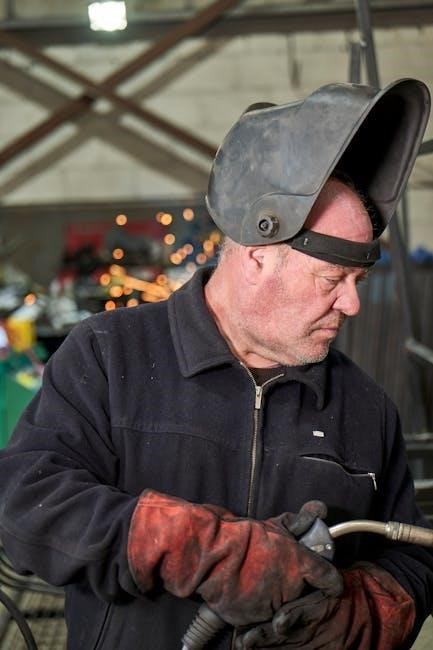
Infographic for Product Selection
An easy-to-follow visual guide helps users match J-B Weld products to their specific material and project needs‚ ensuring the right epoxy is chosen for metal‚ wood‚ plastic‚ or concrete.
Matching Materials with J-B Weld Products
Selecting the right J-B Weld product for your material is crucial for a strong‚ lasting bond. For metal repairs‚ the Original Cold-Weld or SteelStik are ideal due to their high tensile strength and resistance to heat. When working with wood‚ KwikWood or WoodWeld are perfect for creating durable‚ wood-like repairs. Plastic repairs benefit from the PlasticBonder‚ which adheres strongly to most plastic types. For concrete‚ the Concrete Welder is specifically designed to bond and seal cracks effectively. Each product is formulated to match the properties of its intended material‚ ensuring optimal results. Always refer to the product packaging or manufacturer’s guide to confirm compatibility and application instructions.
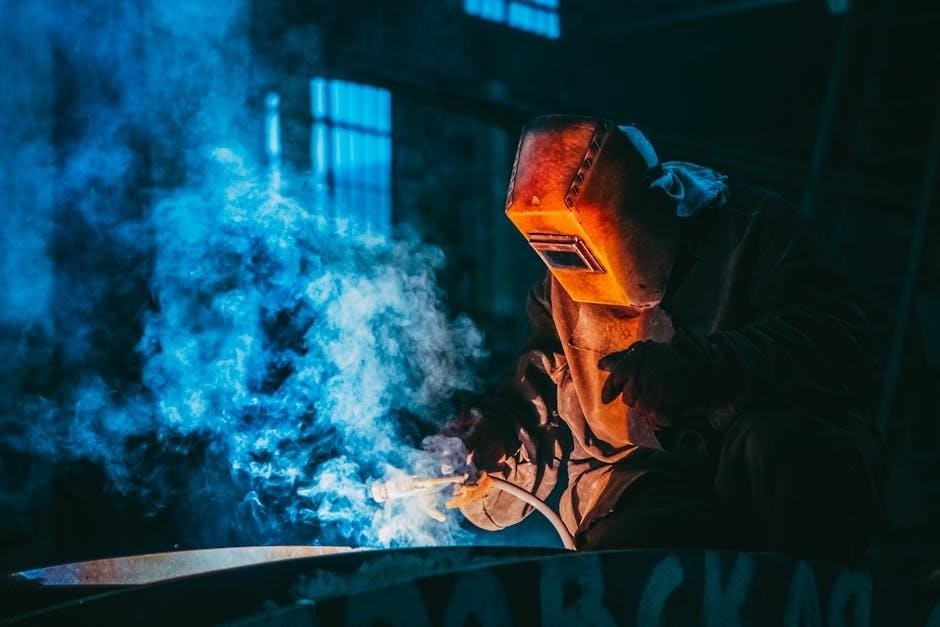
Common Mistakes to Avoid
- Incorrect mixing ratios can weaken bond strength.
- Inadequate surface preparation leads to poor adhesion.
- Applying too thin a layer reduces durability.
- Not allowing proper curing time compromises results.
Incorrect Mixing Ratios
Mixing J-B Weld components in the wrong ratio is a common mistake that can significantly weaken the bond. Always use the recommended 1:1 ratio for most products‚ as specified in the instructions. Failure to do so can lead to a weak or brittle repair. For optimal results‚ mix the entire contents of the packages to ensure the correct proportion of resin and hardener. Using a digital scale can help achieve accuracy. Avoid mixing partial amounts‚ as this often leads to improper ratios. If the mixture appears runny‚ grainy‚ or separates‚ it may indicate an incorrect ratio. Always refer to the product’s instructions for specific mixing guidelines to ensure a strong‚ durable bond. Proper mixing is essential for achieving the full bonding strength of J-B Weld.
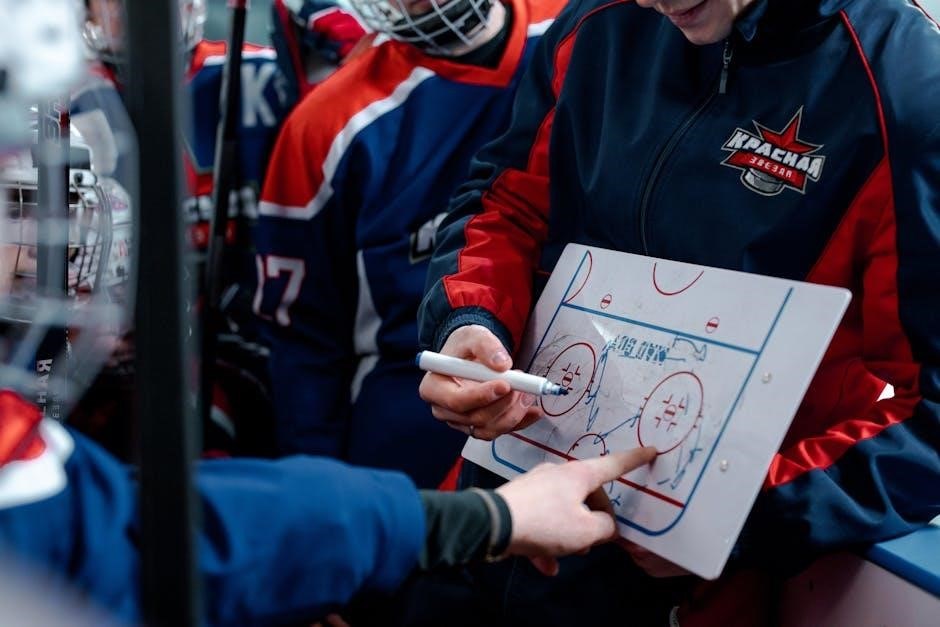
Inadequate Surface Preparation
Inadequate surface preparation is a frequent mistake when using J-B Weld. For a strong bond‚ the surface must be clean‚ dry‚ and free of grease‚ oil‚ or rust. Failure to properly clean or dry the surface can result in a weak or failed repair. Use sandpaper or a wire brush to roughen the surface‚ creating a better texture for the adhesive to bond. Contaminants like dirt or moisture interfere with the bonding process. Always ensure the surface is thoroughly cleaned with a degreaser and completely dry before applying J-B Weld. Skipping these steps can lead to poor adhesion and a less durable repair. Proper surface preparation is critical for achieving the maximum strength of the weld.
Insufficient Curing Time
Insufficient curing time is a common oversight when using J-B Weld‚ leading to weaker bonds and reduced durability. The product requires a full 24 hours to cure at room temperature to achieve its maximum strength of 3‚960 PSI. Many users rush the process‚ touching or stressing the repair before it’s fully hardened. This can cause the bond to fail prematurely. It’s essential to allow the weld to cure undisturbed in a cool‚ dry environment. Higher temperatures can speed up the curing process‚ but it’s crucial to wait the recommended time regardless. Patience is key to ensuring a strong‚ lasting repair. Cutting corners here risks compromising the integrity of the bond.

Safety Tips
Ensure a safe working environment when using J-B Weld. Always work in a well-ventilated area and wear appropriate protective gear. Follow instructions carefully to avoid accidents and ensure proper bonding. Refer to the product’s safety data sheet for detailed precautions.
Proper Ventilation
Proper ventilation is crucial when working with J-B Weld to prevent inhaling harmful fumes. Work in a well-ventilated area‚ opening windows or using fans to circulate air. Avoid breathing in epoxy or hardener vapors‚ as they can cause respiratory irritation or other health issues. In industrial settings‚ consider using exhaust systems to maintain safe air quality. Ensuring good airflow helps prevent fumes from accumulating and reduces potential health risks. Always prioritize ventilation to create a safer working environment for effective and hazard-free J-B Weld application.
Protective Gear
Wearing proper protective gear is essential when using J-B Weld to ensure safety and prevent potential harm. Gloves are a must to protect your skin from direct contact with epoxy and hardeners‚ which can cause irritation. Safety goggles or glasses should be worn to shield your eyes from accidental splashes. Additionally‚ wearing long sleeves and pants can help prevent skin exposure in case of spills. A dust mask is recommended if sanding is involved‚ as it protects against inhaling particles. These precautions help minimize risks and ensure a safe working experience. Always prioritize protective gear to handle J-B Weld effectively and avoid potential health hazards.
Avoiding Contamination
Avoiding contamination is critical when working with J-B Weld to ensure proper bonding and durability. Always work in a clean‚ dry environment‚ and keep the surface free from dust‚ oil‚ grease‚ or moisture. Use clean‚ disposable gloves and tools to prevent transferring contaminants like sweat or dirt to the epoxy or surface. Avoid mixing components on contaminated surfaces‚ as this can weaken the bond. If the surface has been previously exposed to chemicals‚ clean it thoroughly with a solvent before applying J-B Weld. Properly seal and store unused product to prevent exposure to air and moisture‚ which can degrade its effectiveness. A clean workspace and careful handling ensure the best results and long-lasting repairs.
Using J-B Weld effectively ensures durable‚ long-lasting repairs. By following instructions carefully‚ you can achieve professional-grade results. Always prioritize proper preparation‚ application‚ and curing for best outcomes.
Final Thoughts on Using J-B Weld
Mastering J-B Weld requires patience and attention to detail. By adhering to the instructions and preparing surfaces properly‚ you can achieve robust‚ long-lasting repairs. Always allow adequate curing time and ensure a clean‚ dry environment for optimal results. J-B Weld’s versatility makes it ideal for various materials‚ but success hinges on following the mixing ratios and application guidelines precisely. Safety is paramount‚ so wear protective gear and work in a well-ventilated area. With practice‚ you’ll become proficient in using this powerful adhesive‚ tackling projects with confidence. Remember‚ proper technique and adherence to instructions are key to unlocking J-B Weld’s full potential.
Encouragement to Follow Instructions
Adhering to J-B Weld instructions is crucial for achieving professional-grade repairs. By following the guidelines‚ you ensure optimal bonding strength‚ durability‚ and safety. Proper preparation‚ mixing‚ and curing times are essential to avoid weak bonds or unsafe repairs. Ignoring instructions can lead to compromised results‚ making the repair unreliable. J-B Weld’s effectiveness depends on correct application‚ so take the time to understand and follow each step carefully. This attention to detail will yield long-lasting‚ professional-quality fixes. Remember‚ J-B Weld is a powerful tool‚ but its success relies on your commitment to the process. Stay patient‚ precise‚ and proactive to achieve the best outcomes for your projects.
